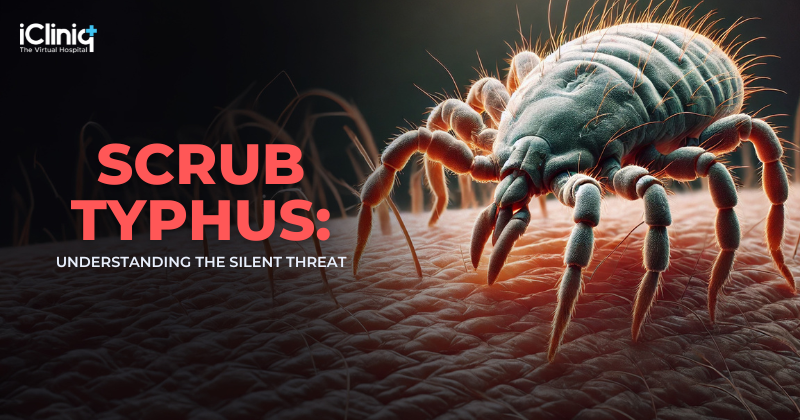What if a small, unnoticed bite could turn your outdoor adventure into a health challenge? Stay informed, stay protected, and keep scrub typhus at bay.
Be ready for those dangers of nature in disguise? That scrub typhus is teeny, its blow can be quite big. How to safeguard yourself from them, read this section.
Feeling unwell after a trip to the outdoors? It could be more than fatigue—recognize the signs of scrub typhus and take action early.
Scrub Typhus: A Hidden Risk in Rural and Forested Areas
Scrub typhus is a bacterial infection caused by Orientia tsutsugamushi and transmitted through the bite of infected chiggers, which are larval mites. It is common in rural and forested areas and is prevalent in parts of Asia, Australia, and the Pacific Islands.
The name may sound strange, but scrub typhus is no laughing matter. If left untreated, it can cause severe complications affecting multiple organs.
Recognizing the Key Symptoms of Scrub Typhus
Scrub typhus symptoms usually appear 6–21 days after a chigger bite. The most common signs include:
- Sudden fever and chills.
- Severe headache and body aches.
- Fatigue and muscle pain.
- Rash or an eschar (a black scab at the bite site).
- Enlarged lymph nodes.
When to Act:
If you’ve recently visited a rural or forested area and experience these symptoms, consult a doctor immediately. Early treatment is crucial.
Diagnosis of Scrub Typhus: Recognizing the Signs and Tests
Diagnosis is based on a combination of clinical symptoms and history of exposure. Blood tests are usually required to confirm the presence of the bacteria.
Treatment for Scrub Typhus
Scrub typhus can be treated with the help of antibiotics like doxycycline or azithromycin. Early treatment avoids complications such as:
- Respiratory distress.
- Organ failure.
- Meningitis.
- Prevention is better than cure.
Preventing Scrub Typhus: Essential Tips to Stay Safe Outdoors
The best way to prevent scrub typhus is by avoiding areas where chiggers are prevalent. Here’s how you can safeguard yourself:
- Protective Wear: Wear long-sleeved shirts and pants. Tuck your pants inside socks.
- Application of Repellent: Apply the repellents which contain DEET on exposed areas of the body and permethrin on the clothes.
- Not Sitting on Grass: Chiggers are usually hidden in low-level vegetation. Thus, avoid any direct contact of the skin with soil or grass in rural conditions.
- Keep Clean: After outdoor work, bathe and launder clothes in hot water to kill the mites.
Identifying Those Most Vulnerable to Scrub Typhus
Scrub typhus primarily impacts:
- Farm workers and other agricultural laborers.
- Hikers and campers who spend time outdoors in wooded regions.
- Natives of endemic areas.
- If you regularly work or play outdoors in high-risk environments, awareness and vigilance are your best defenses.
Scrub typhus might be small in size, but it has the power to impact health seriously. Identifying symptoms at an early stage, proper treatment, and prevention will help you be safe from this mite-borne disease.
Next time you step out of your home, remember: a little caution goes a long way. Be alert and save yourself from this silent threat.
Publisher: Source link










